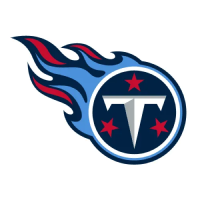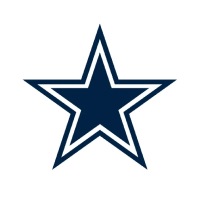DeVonta Smith won the Heisman. Now comes the hard part.
It was truly a season for the ages for Smith, who became the fourth wide receiver to win the award in its storied history—the first since Desmond Howard in 1991. Smith ended the season with 117 receptions and 1,856 yards, delivering 16 yards with each reception on an astounding 78% catch rate with 23 touchdowns to boot. Utter dominance.
Smith’s explosion, while far and beyond expectation, was foretold by his junior season. On a roster with three other first-round picks at wide receiver—Jerry Jeudy, Henry Ruggs III, and Jaylen Waddle—Smith was used as Alabama’s “gotta have it” receiver. When facing a third down or looking for a winner against press coverage, quarterback Tua Tagovailoa’s port of call was most frequently Smith. Off of 2019 film, Smith didn’t have the physical toolkit that made Ruggs (long speed) and Jeudy (quickness) so enticing—but he was the better player.
https://twitter.com/BenjaminSolak/status/1335417795283218434
Smith was the better player; but is he the better prospect?
I ended up with late first-round grades on both Jeudy and Ruggs, who were top-15 selections in the 2019 NFL Draft. They were both polished college receivers who checked the boxes on film review and athletic testing. Ruggs had questions on his early-career production, so the analytics community wasn’t a huge fan, but other than that, they were quality prospects.
Smith will run into a similar issue that Ruggs did. His top production came in his third season as a 20-year-old junior, and this year’s truly dominant performance came as a senior. The fantasy community has long tracked a stat called “breakout age” to predict top fantasy performers at wide receivers, and we know that the younger a player begins producing at the college level, the more likely it is that player will have dominant seasons in the NFL.
Smith is a good case study for an exception to the rule of breakout age. He played with Waddle, Ruggs, and Jeudy in every season since his sophomore year, and in his freshman season, had Calvin Ridley and Cam Sims to contend with as well. Smith wasn’t able to outproduce his cohorts from the 2017 recruiting class, Ruggs and Jeudy, until his junior season—but the offseason hype for Jeudy and Ruggs had already taken off, and Smith elected to return to school. Despite that, on a team with four first-round wide receivers, Smith was the leading producer—and in 2020, he was a touchdown-scoring, Heisman-winning machine. The production came, and it came on at historic levels.
So Smith won’t have the strongest production profile for the teams who make data-driven decisions; that’s fine. But he also won’t have the strongest athletic profile, either.
Don’t get me wrong: Smith is plenty quick and plenty fast. Smith clocked in the high 4.4s during Alabama’s junior day last year, and his separation speed is evident on tape—so is the acceleration, body control, and agility of a premier route-runner. What Smith does in space is inarguable, and he should put up good testing times accordingly. The concern is the weight at which he will do it.
Body Mass Index has been used as a filter when fantasy experts project top seasons from upcoming wide receivers. The implication here is that NFL-caliber play strength requires at least some functional mass, and the more well-built a wide receiver is, the more likely he is to win in important ways. It takes play strength to elevate for 50/50 balls and rip them from defensive backs. It takes play strength to survive press coverage at the line of scrimmage. It takes play strength to hold the red line on downfield routes.
Smith has play strength on his film—you can’t deny it. But when you project it to the NFL, you have to wonder how his frame will hold up against pro-sized bodies. College programs rarely have the athletes, and practice time, necessary to run quality press coverage—so Smith hasn’t seen it much. And when he sees it, he usually dominates. But at his size, it’s a concern for NFL teams.
Affectionately coined the Slim Reaper, Smith plays at a listed weight of 174 pounds for Alabama. Since 2000, only four receivers have had multiple seasons of at least 1,000 yards receiving while playing under 180 pounds. DeSean Jackson leads the group with five, Emmanuel Sanders has three, and John Brown and Brian Hartline have two apiece. If Smith’s listed measurables at 6-foot-1 are accurate, his BMI is 23.0—only Robby Anderson in 2020 and Steve Breaston in 2008 have produced 1,000-yard seasons with BMIs under 24.0.
To say that Smith is a bad prospect because his BMI is low and his production came later in his career is ludicrous. Turn on the film. He’s awesome at football. Bang: he’s a good prospect.
But enjoying quality film and getting excited about future pros is a luxury of the college football season. We’ve left that now; we’re officially in draft season. Here, the rubber meets the road as teams try to split the hairs between top draft prospects. Against a player like Ja’Marr Chase—better build, earlier production, excellent film—Smith’s profile simply has more holes. They’re both Tier 1 receivers, but general managers’ careers can hang in the balance of a top-10 pick hitting or missing. Do you want to gamble on outlier success from a lighter receiver like Smith?
Perhaps a general manager does, and perhaps they’ll be right. Scouting is a subjective business that requires heuristic approaches. That’s why we grind film at The Draft Network and do our best to project translatable traits and define ideal fits. In that process, we’ll see all of the screens that Smith catches (more than anyone else in college football) and the work he does against press coverage (better work than anyone else). And those film grades will help fill out a major piece of the puzzle.
Smith’s magical season is over now—it was one of the best in recent memory. He’s absurdly talented and wicked fun to root for. But he isn’t a player anymore—he’s a prospect. Prospects are measured against different standards and valued for different things than players are, which means Smith’s film, production, and build must be viewed in a different light. For as exciting as he was in the 2020 season, he’s as contentious and difficult a prospect in the 2021 draft cycle.
Filed In
Related Articles
NFL Draft
Arik Gilbert Doesn’t Need Big Workload To Be A Top NFL Draft Pick
- Aug 22, 2022
NFL Draft
2023 NFL Mock Draft: Marino 1.0
- Aug 22, 2022
Written By


































